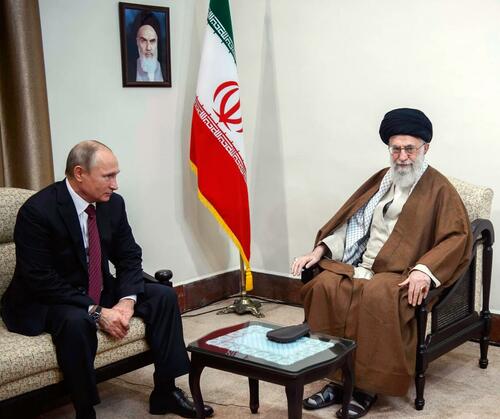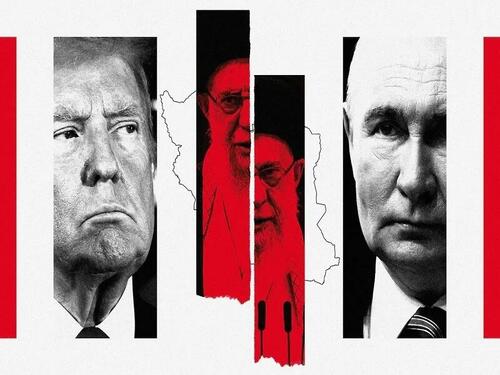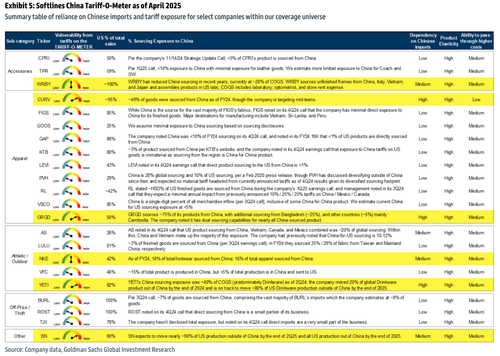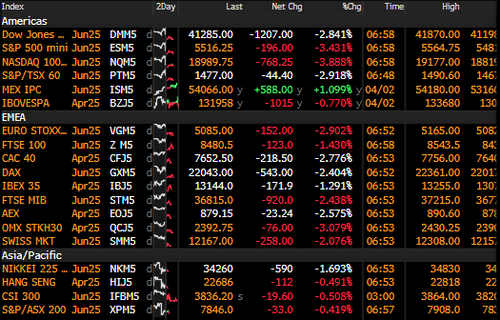Russia Warns Against US Strikes On Iran Nuclear Sites: ‘Catastrophic & Illegal’
Russia Warns Against US Strikes On Iran Nuclear Sites: ‘Catastrophic & Illegal’
Via The Cradle
The Russian Foreign Ministry warned on Thursday that US threats of attack against Iran are “unacceptable” and could result in a “catastrophe”.
“The use of military force by Iran’s opponents in the context of the settlement is illegal and unacceptable. Threats from outside to bomb Iran’s nuclear infrastructure facilities will inevitably lead to an irreversible global catastrophe. These threats are simply unacceptable,” Foreign Ministry spokeswoman Maria Zakharova said.
Russian Deputy Foreign Minister Sergei Ryabkov also told Life magazine that the “consequences of this, especially if there are strikes on the nuclear infrastructure, could be catastrophic for the entire region.”
Kremlin Pool via AP
Russia and the US have recently held talks on ending the war in Ukraine. Ryabkov said these talks have not resulted in a breakthrough.
Regarding tension between Tehran and Washington, Ryabkov said Russia “condemns US threats.” The Russian Foreign Ministry comes after US President Donald Trump renewed his threat to attack Iranian nuclear facilities.
“If they don’t make a deal, there will be bombing. But there’s a chance that if they don’t make a deal, that I will do secondary tariffs on them like I did four years ago,” the president said on Sunday. Iran issued a formal complaint to the UN Security Council and said it would respond to any threat.
Trump had sent a letter to Iranian leadership in early March, threatening an attack if Tehran did not come to the negotiating table. Iranian officials said they would not negotiate under threats and economic sanctions, which Trump has imposed with full force as part of his “maximum pressure” policy.
This week, Iran’s Foreign Minister Abbas Araghchi said Tehran has officially responded to Trump’s letter signaling a willingness for indirect talks, which the US is reportedly considering.
However, Washington is simultaneously beefing up its forces in the region in preparation for a potential attack. This follows several reports over the past two months that Israel is planning to strike at the Iranian nuclear program.
Iran’s Deputy Foreign Minister Majid Takht Ravachi held talks on the nuclear issue with Ryabkov on Wednesday.
“The sides stressed the illegality and inadmissibility of the use of military force by Iran’s opponents to resolve disagreements and the unacceptability of threats from the outside to bomb Iran’s nuclear energy infrastructure, as this will inevitably lead to large-scale and irreversible radiological and humanitarian consequences for the entire Middle East region and the world as a whole,” the Russian Foreign Ministry said.
Satellite imagery from earlier today by @IndoPacWatch shows 6 B-2 “Spirit” Long-Range Strategic Stealth Bombers with the 509th Bomb Wing, on the tarmac at Naval Support Facility Diego Garcia in the Indian Ocean, a little more than 2,000 miles away from Iran. pic.twitter.com/divXs4o9kb
— OSINTdefender (@sentdefender) April 1, 2025
China, Russia, and Iran released a joint statement on March 14 demanding an end to “unlawful” US sanctions against the Islamic Republic after meetings in Beijing between the three countries.
Tehran insists that its nuclear program is entirely peaceful, in line with a religious fatwa against weapons of mass destruction, as well as the…










